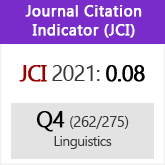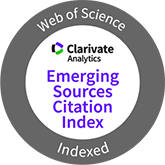Biomedical applications of voice and speech processing
DOI:
https://doi.org/10.3989/loquens.2016.035Keywords:
speech processing, neurologic diseases, computer-aided diagnosis, Alzheimer Disease, Parkinson Disease, Amyotrophic Lateral Sclerosis, Myasthenia GravisAbstract
Neurological deterioration presents different variants depending on their classification criterion, which may be their anatomic localization or their disease clinical features, although there is not a clear cut between both. Anatomically this ample group of disorders may affect the central nervous system (brain and spinal cord), or the peripheral nervous system. Clinically, the neurodegenerative disorders are classified as affecting cognitive functions or neuromotor capabilities. In the group of neurodegenerative diseases of the central nervous system, Alzheimer’s disease (AD) or Fronto-Temporal Dementia (FTD) are to be found, whereas in the second group certain pathologies as Parkinson’s Disease (PD), Amyotrophic Lateral Sclerosis (ALS), Huntington’s Disease (HD) or myasthenia gravis (MG) are among the most frequent ones, although “the number of neurodegenerative diseases is currently estimated to be a few hundred” (Przedborski et al., 2003). All these pathologies produce correlates in speech at different levels: in fluency, in prosody, in articulation or in phonation. Speech technologies offer computer solutions to evaluate objectively detected anomalies in each level, adding statistical robustness, which makes them suitable for their clinical and rehabilitative application. The present issue is devoted to briefly review the characteristics of the diseases mentioned before, defining the foundations of the correlate features present in each one. Some computer solutions available in detecting and monitoring illness progress are reviewed in the contributions of different research groups working in this field.
Downloads
References
Carmona-Duarte, C., Alonso, J. B., Díaz, M., Ferrer, M. A., Gómez-Vilda, P., & Plamondon, R. (2016). Kinematic modelling of diphthong articulation. In A. Esposito et al. (Eds.), Recent advances in nonlinear speech processing, vol. 48, 53?60. Cham: Springer. https://doi.org/10.1007/978-3-319-28109-4_6
Cecchi, G. (2017). With AI, our words will be a window into our mental health. Retrieved from https://www.ibm.com/blogs/research/2017/1/ibm-5-in-5-our-words-will-be-the-windowsto-our-mental-health/
Gómez-Vilda, P., Palacios-Alonso, D., Gómez-Rodellar, A., Ferrández-Vicente, J. M., Álvarez-Marquina, A., Martínez-Olalla, R., & Nieto-Lluis, V. (2017). Relating facial myoelectric activity to speech formants. In J. M. Ferrández Vicente, J. R. Álvarez-Sánchez, F. de la Paz López, J. Toledo Moreo & H. Adeli (Eds.), Proceedings of IWINAC 2017 LNCS 10338, Vol. 2. (pp. 520-530). Cham: Springer. https://doi.org/10.1007/978-3-319-59773-7_53
Mekyska, J., Janousova, E., Gomez-Vilda, P., Smekal, Z., Rektorova, I., Eliasova, I., … López-de-Ipi-a, K. (2015). Robust and complex approach of pathological speech signal analysis. Neurocomputing, 167, 94-111. https://doi.org/10.1016/j.neucom.2015.02.085
Moser, E. I., Roudi, Y., Witter, M. P., Kentros, C., Bonhoeffer, T., & Moser, M. B. (2014). Grid cells and cortical representation. Nature Reviews Neuroscience, 15(7), 466-481. https://doi.org/10.1038/nrn3766 PMid:24917300
Przedborski, S., Vila, M., & Jackson-Lewis, V. (2003). Neurodegeneration: What is it and where are we? The Journal of Clinical Investigation, 111, 3-10. https://doi.org/10.1172/JCI200317522 PMid:12511579 PMCid:PMC151843
Sapir, S., Ramig, L. O., Spielman, J. L., & Fox, C. (2010). Formant centralization ratio: A proposal for a new acoustic measure of dysarthric speech. Journal of Speech, Language and Hearing Research, 53, 114-125. https://doi.org/10.1044/1092-4388(2009/08-0184) PMCid:PMC4504121
Savariaux, C., Badin, P., Samson, A., & Gerber, S. (2017). A comparative study of the precision of Carstens and Northern Digital Instruments electromagnetic articulographs. Journal of Speech, Language and Hearing Research, 60, 322-340. https://doi.org/10.1044/2016_JSLHR-S-15-0223 PMid:28152131
Yunusova, Y., Weismer, G., Westbury, J. R., & Lindstrom, M. J. (2008). Articulatory movements during vowels in speakers with dysarthria and healthy controls. Journal of Speech, Language, and Hearing Research, 51(3), 596-611. https://doi.org/10.1044/1092-4388(2008/043)
Published
How to Cite
Issue
Section
License
Copyright (c) 2017 Consejo Superior de Investigaciones Científicas (CSIC)

This work is licensed under a Creative Commons Attribution 4.0 International License.
© CSIC. Manuscripts published in both the printed and online versions of this Journal are the property of Consejo Superior de Investigaciones Científicas, and quoting this source is a requirement for any partial or full reproduction.All contents of this electronic edition, except where otherwise noted, are distributed under a “Creative Commons Attribution 4.0 International” (CC BY 4.0) License. You may read here the basic information and the legal text of the license. The indication of the CC BY 4.0 License must be expressly stated in this way when necessary.
Self-archiving in repositories, personal webpages or similar, of any version other than the published by the Editor, is not allowed.















